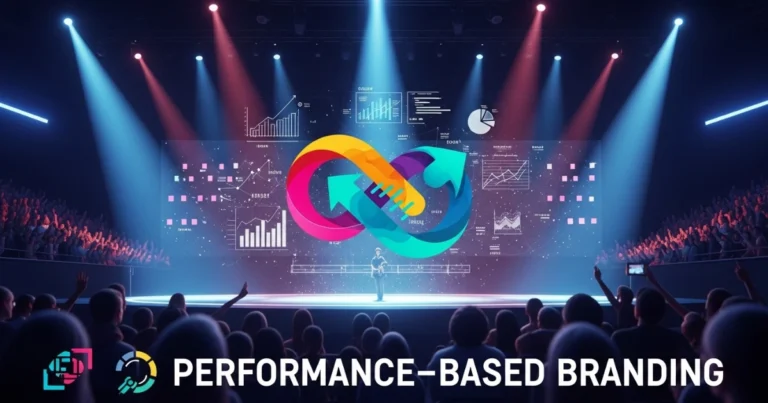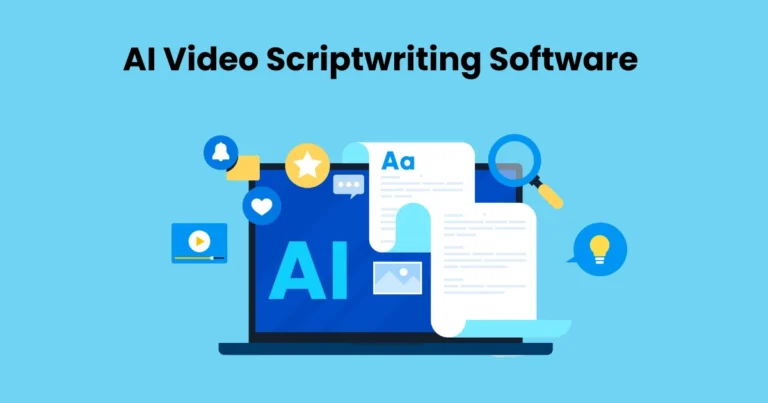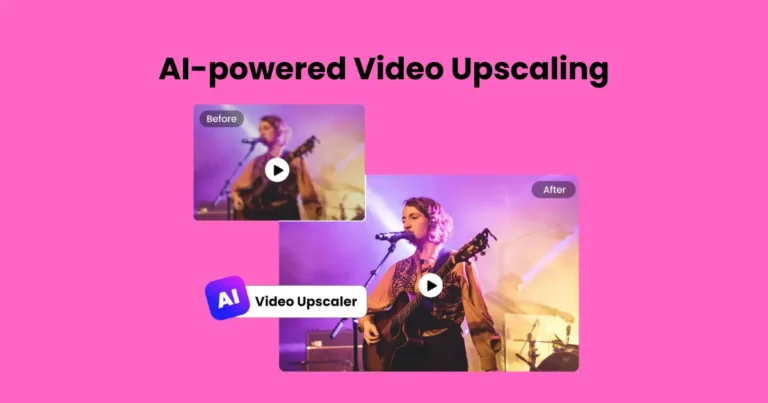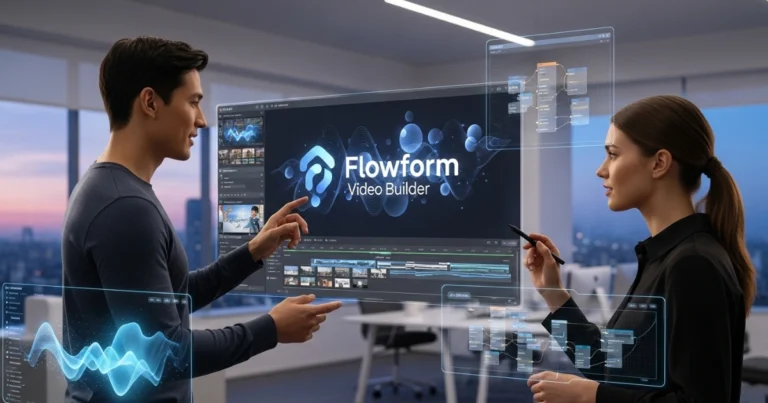Key Concepts in AI Video Generation Explained
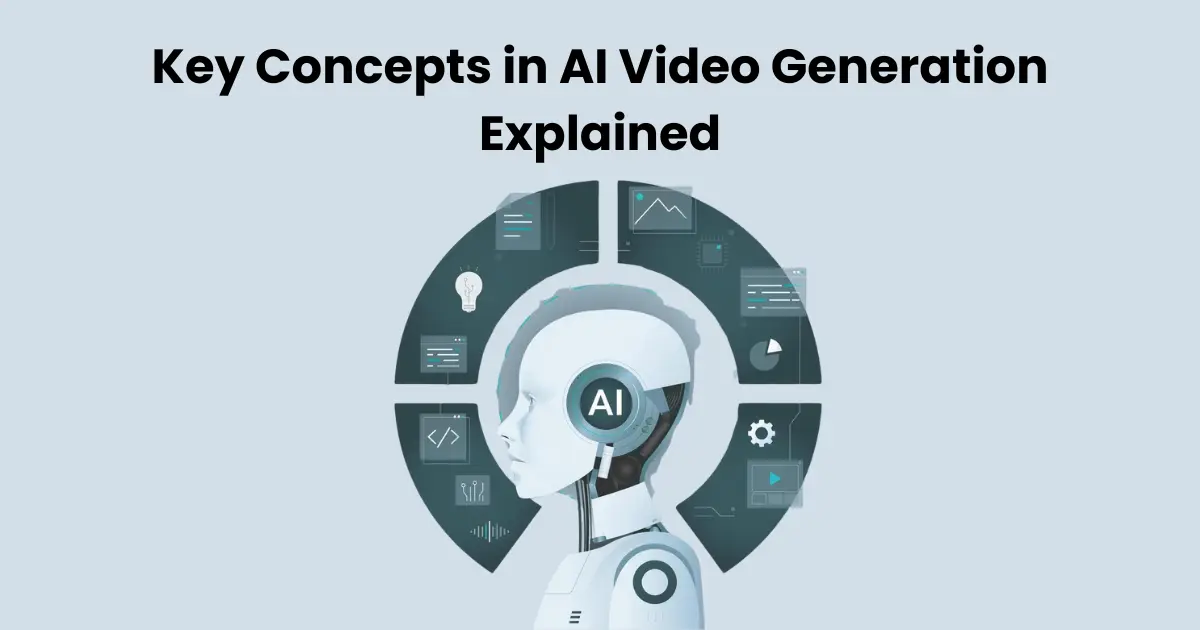
Contents
The key concepts in AI video generation explained in this guide reveal how artificial intelligence is reshaping the world of digital content. AI video generation involves using sophisticated algorithms and machine learning models to create videos automatically from text, images, or audio inputs. This technology not only streamlines the production process but also opens new creative possibilities across industries.
In recent years, AI video generation has moved from experimental labs to mainstream applications. Businesses now use AI-generated videos for marketing, training, and storytelling, reducing costs and accelerating delivery. Whether you’re a content creator or tech enthusiast, understanding the key concepts in AI video generation explained in this article will help you navigate this rapidly evolving field with clarity and confidence.
From the fundamental technologies that power it to the real-world use cases driving its adoption, we’ll break down each aspect in simple, actionable terms. Let’s begin by understanding what AI video generation really means and how it works under the hood.
What Is AI Video Generation?
AI video generation is the automated creation of videos using artificial intelligence. Unlike traditional video production, which involves manual filming, editing, and rendering, AI video tools can produce high-quality videos from simple inputs like text prompts, images, or voice commands.
At its core, AI video generation uses machine learning models particularly deep learning and generative algorithms to analyze data and generate visual content. These models can simulate motion, apply realistic animations, generate characters, and even sync voiceovers with facial expressions. In many cases, the process requires no cameras or actors at all.
Understanding the key concepts in AI video generation explained here is essential to grasp how this technology works. AI systems analyze language through natural language processing (NLP), create visuals using generative adversarial networks (GANs), and often enhance the results with real-time rendering. As a result, users can create explainer videos, product demos, or virtual presenters in just a few clicks.
AI video generation is not just about automation it’s about accessibility and scalability. Businesses can now produce hundreds of personalized videos in a fraction of the time it used to take, and individuals can bring complex ideas to life without needing advanced technical skills.
This technology is revolutionizing content creation by making video production faster, smarter, and more intuitive.
Core Technologies Behind AI Video Generation
To fully understand the key concepts in AI video generation explained, it’s important to explore the foundational technologies that make this innovation possible. These core components work together to create realistic, engaging, and intelligent video content from minimal input.

Machine Learning
Machine learning is the backbone of AI video generation. It enables computers to learn from data and improve over time without being explicitly programmed. In video generation, machine learning models identify patterns in audio, visual, and textual data to automate video production processes.
Deep Learning and Neural Networks
Deep learning, a subset of machine learning, uses neural networks that mimic the human brain. These networks consist of multiple layers that process and transform information. In AI video generation, deep learning helps with object recognition, motion tracking, and scene understanding, which allows the system to generate complex visual outputs accurately.
Generative Adversarial Networks (GANs)
Generative Adversarial Networks are pivotal in producing lifelike video content. GANs consist of two neural networks the generator and the discriminator that work against each other. The generator creates new video frames, while the discriminator evaluates them. This continuous feedback loop results in highly realistic visuals, a concept central to many AI video tools.
Natural Language Processing (NLP)
Natural Language Processing allows AI systems to interpret and generate human language. In AI video generation, NLP is used to analyze script inputs, understand tone, and even assign emotions or actions to virtual characters. As a result, users can turn plain text into dynamic video scenes.
Each of these technologies contributes to making the key concepts in AI video generation explained more tangible. They allow AI systems to understand context, produce coherent visuals, and generate human-like interactions all in a matter of seconds.
Workflow of AI Video Generation
Now that you understand the technologies involved, let’s dive into the practical workflow of AI video generation. This step-by-step process brings the key concepts in AI video generation explained earlier to life, showing how raw input transforms into a fully rendered video.

Script or Text Input
The process begins with a script or prompt. Users provide a textual description of what they want to see this could be a full narrative, bullet points, or even a simple sentence. Natural Language Processing (NLP) algorithms then interpret the meaning, extract relevant entities, and prepare the system to generate corresponding visuals and dialogue.
Scene Generation
Next, the AI constructs the scene. Based on the context of the script, it selects or creates appropriate backgrounds, characters, props, and camera angles. This is where deep learning and GANs come into play, synthesizing environments that match the tone and setting of the content.
Animation and Movement
With the scene in place, the AI animates the characters and objects. It adds gestures, facial expressions, and body movements that align with the script’s emotional tone and intended actions. This step ensures the video feels dynamic and lifelike rather than static or robotic.
Voice Synchronization
Finally, the system adds voiceovers either synthetic or pre-recorded and synchronizes them with the character’s lip movements. Voice cloning and speech-to-animation models ensure perfect timing and expression, making the video appear naturally spoken and emotionally engaging.
Together, these steps illustrate the key concepts in AI video generation explained clearly and practically. From idea to execution, AI manages every element with precision, allowing users to produce professional-quality videos in record time.
Real-World Applications
Understanding the key concepts in AI video generation explained earlier helps us see just how powerful and versatile this technology has become. Today, AI-generated videos are no longer experimental they are reshaping content creation across multiple industries.

Content Creation and Marketing
Marketers are among the earliest adopters of AI video generation. Businesses use it to create personalized video ads, product demos, and explainer videos in bulk. Instead of spending hours on manual editing, teams now generate high-quality content quickly and cost-effectively. AI also allows for multilingual voiceovers and tailored messaging, enhancing global reach.
Education and Training
Educators and corporate trainers use AI video tools to create interactive lessons, training modules, and explainer videos. AI helps transform complex topics into engaging, easy-to-understand visual content. Since updates are fast and simple, institutions can keep their material current without major production overhauls.
Entertainment Industry
In film, television, and gaming, AI video generation is pushing creative boundaries. Studios experiment with AI to generate characters, simulate movements, and pre-visualize scenes. Even independent creators now have access to tools once reserved for big-budget productions, democratizing the creative process.
Social Media and Influencers
Content creators and influencers leverage AI to maintain a consistent online presence. Whether it’s auto-generated TikToks, Instagram reels, or YouTube shorts, AI enables fast, automated production. Some even use AI avatars to represent themselves virtually, saving time while maintaining brand identity.
These practical examples highlight the key concepts in AI video generation explained in real action. By automating time-consuming tasks, AI allows professionals across sectors to focus on creativity and strategy instead of logistics.
Benefits of Using AI for Video Creation
With the key concepts in AI video generation explained so far, it’s easy to see why this technology is gaining traction. AI doesn’t just make video creation faster it enhances quality, accessibility, and personalization in ways traditional methods cannot match.

Speed and Efficiency
One of the most significant benefits is speed. AI drastically reduces production time. What once took days or weeks can now be completed in minutes. This is especially valuable for marketers, educators, and content creators who work on tight deadlines.
Cost-Effectiveness
AI video tools eliminate the need for expensive equipment, large crews, and lengthy editing processes. Small businesses and startups can now compete with larger brands by creating professional-quality videos at a fraction of the cost.
Scalability
AI enables mass production of content. For instance, a company can generate hundreds of personalized videos each tailored to a different customer or region with minimal effort. This scalability is a game-changer for global campaigns and large educational platforms.
Consistency and Quality
Automated systems ensure that the final product is consistent across different formats and outputs. Whether you’re producing a training series or a multi-part ad campaign, AI maintains the same level of quality, branding, and messaging.
Accessibility for Non-Experts
You no longer need to be a video editing expert to produce stunning content. With AI, anyone with a basic idea can create compelling videos using drag-and-drop interfaces, templates, or even voice commands.
These advantages underscore the key concepts in AI video generation explained throughout this article: automation, intelligence, and creativity. But as with any innovation, there are also limitations to be aware of.
Challenges and Ethical Concerns
While the benefits are compelling, understanding the key concepts in AI video generation explained must also involve a critical look at its limitations and ethical challenges. As this technology advances, so do the risks associated with its misuse and technical boundaries.
Deepfake Risks and Misinformation
One of the most pressing ethical concerns is the misuse of AI-generated videos for disinformation. Deepfakes hyper-realistic fake videos can be created to impersonate individuals, manipulate public opinion, or spread false narratives. These threats raise serious concerns about trust, media integrity, and privacy.
Copyright and Intellectual Property
AI models often train on large datasets that may include copyrighted content. This creates legal grey areas regarding ownership. If an AI generates a video using material it was exposed to during training, questions arise about who truly owns the final product especially if original creators were not credited or compensated.
Lack of Emotional Depth
Although AI video tools can replicate gestures and expressions, they still lack true emotional intelligence. This can result in videos that feel slightly robotic or fail to connect with audiences on a deeper, human level especially in storytelling or artistic contexts.
Algorithmic Bias
AI systems reflect the data they are trained on. If that data is biased or unrepresentative, the resulting videos may unintentionally reinforce stereotypes or exclude certain groups. Ensuring fairness and diversity in AI training data remains a major challenge.
Transparency and Disclosure
Many viewers may not realize they are watching AI-generated content. Without clear disclosure, audiences could be misled whether intentionally or not. This raises ethical questions about authenticity and the responsibility of creators to be transparent.
Despite these concerns, understanding the key concepts in AI video generation explained throughout this article allows us to approach this technology with both excitement and caution. Responsible use and continued oversight are essential as AI continues to shape the future of video.
The Future of AI Video Generation
As we’ve seen the key concepts in AI video generation explained, it’s clear that this field is only just beginning to unlock its full potential. With rapid advancements in computing power, machine learning algorithms, and creative applications, the future of AI video generation looks incredibly promising.

Hyper-Realism and Real-Time Generation
In the coming years, expect AI to produce videos that are nearly indistinguishable from real footage. Real-time rendering will allow creators to make dynamic content on the fly perfect for live broadcasting, virtual influencers, and interactive storytelling experiences.
Greater Personalization
AI will soon be capable of creating ultra-personalized content at scale. From individual customer greetings to tailored educational lessons, each video will adapt based on user preferences, behavior, or location enhancing engagement and relevance.
Enhanced Collaboration Between Humans and AI
Rather than replacing creatives, AI will become a co-pilot in the video production process. Writers, animators, marketers, and educators will use AI tools to accelerate workflows while focusing on strategy, creativity, and emotional nuance elements only humans can fully master.
Integration with Other Technologies
The fusion of AI with augmented reality (AR), virtual reality (VR), and blockchain will open new frontiers. Imagine AI-generated virtual worlds for training, entertainment, or immersive brand experiences delivered with traceable authenticity and user interactivity.
Stronger Ethical Standards and Governance
As awareness around AI ethics grows, developers and policymakers will likely implement stricter guidelines for transparency, fairness, and accountability. Clear labeling of AI-generated content, better model training protocols, and robust content verification will become standard.
The key concepts in AI video generation explained throughout this article are not just technical they’re transformative. AI video tools are reshaping how we communicate, educate, and entertain. Embracing this innovation responsibly will be the key to unlocking its full creative and societal value.
Conclusion
With the key concepts in AI video generation explained, it’s evident that this technology is revolutionizing how we create, consume, and think about video content. From streamlining production and reducing costs to unlocking new forms of personalization and interactivity, AI is changing the creative landscape at lightning speed.
However, as powerful as it is, AI video generation comes with real responsibilities. Challenges like ethical transparency, algorithmic bias, and deepfake misuse must be addressed through thoughtful regulation and informed user practices. Only then can we ensure that innovation moves forward in a way that benefits everyone.
By understanding these core ideas and staying informed, creators, marketers, educators, and developers can make the most of what AI video has to offer while also helping shape a future where technology and creativity thrive together.

